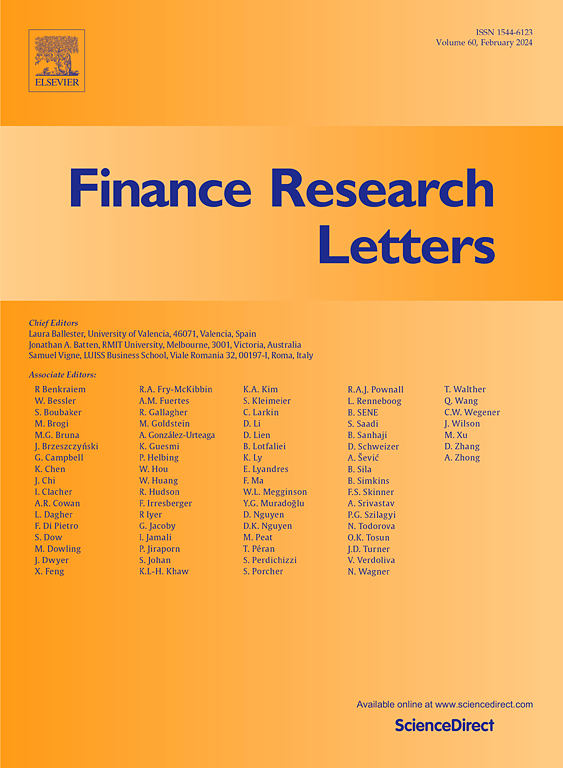How do community banks access liquidity during funding stress events?
IF 7.4
2区 经济学
Q1 BUSINESS, FINANCE
引用次数: 0
Abstract
We examine how community banks access liquidity during funding stress events. We find a liquidity facility utilization pecking order, in which Federal Home Loan Bank (FHLB) advances are the most utilized liquidity facility, followed by the federal funds market, followed by repurchase agreements. We also find that balance sheet liquidity affects the utilization of liquidity facilities. During funding stress events, banks that have relatively more liquid balance sheets increase their utilization of repurchase agreements and federal funds, and decrease their utilization of FHLB advances, while banks with relatively more illiquid balance sheets increase their utilization of FHLB advances, and decrease their utilization of repurchase agreements and federal funds. Our findings suggest that the FHLB is fulfilling its mission to provide liquidity to its members and support housing finance, and may be the preferred lender of last resort for community banks.
社区银行如何在融资压力事件中获得流动性?
我们研究了社区银行如何在融资压力事件中获得流动性。我们发现了流动性工具使用的优先顺序,其中联邦住房贷款银行(FHLB)预付款是使用最多的流动性工具,其次是联邦基金市场,其次是回购协议。我们还发现,资产负债表流动性影响流动性工具的使用。在资金压力事件中,资产负债表流动性较好的银行增加了对回购协议和联邦资金的利用,减少了对FHLB垫款的利用,而资产负债表流动性较差的银行增加了对FHLB垫款的利用,减少了对回购协议和联邦资金的利用。我们的研究结果表明,FHLB正在履行其向其成员提供流动性和支持住房融资的使命,并且可能是社区银行首选的最后贷款人。
本文章由计算机程序翻译,如有差异,请以英文原文为准。
求助全文
约1分钟内获得全文
求助全文
来源期刊

Finance Research Letters
BUSINESS, FINANCE-
CiteScore
11.10
自引率
14.40%
发文量
863
期刊介绍:
Finance Research Letters welcomes submissions across all areas of finance, aiming for rapid publication of significant new findings. The journal particularly encourages papers that provide insight into the replicability of established results, examine the cross-national applicability of previous findings, challenge existing methodologies, or demonstrate methodological contingencies.
Papers are invited in the following areas:
Actuarial studies
Alternative investments
Asset Pricing
Bankruptcy and liquidation
Banks and other Depository Institutions
Behavioral and experimental finance
Bibliometric and Scientometric studies of finance
Capital budgeting and corporate investment
Capital markets and accounting
Capital structure and payout policy
Commodities
Contagion, crises and interdependence
Corporate governance
Credit and fixed income markets and instruments
Derivatives
Emerging markets
Energy Finance and Energy Markets
Financial Econometrics
Financial History
Financial intermediation and money markets
Financial markets and marketplaces
Financial Mathematics and Econophysics
Financial Regulation and Law
Forecasting
Frontier market studies
International Finance
Market efficiency, event studies
Mergers, acquisitions and the market for corporate control
Micro Finance Institutions
Microstructure
Non-bank Financial Institutions
Personal Finance
Portfolio choice and investing
Real estate finance and investing
Risk
SME, Family and Entrepreneurial Finance
 求助内容:
求助内容: 应助结果提醒方式:
应助结果提醒方式:


